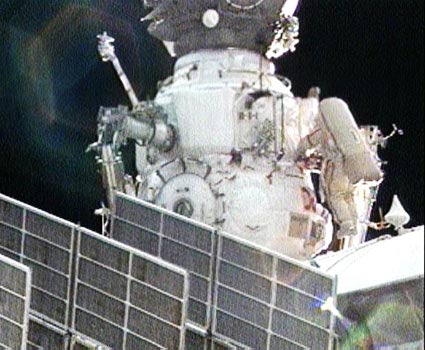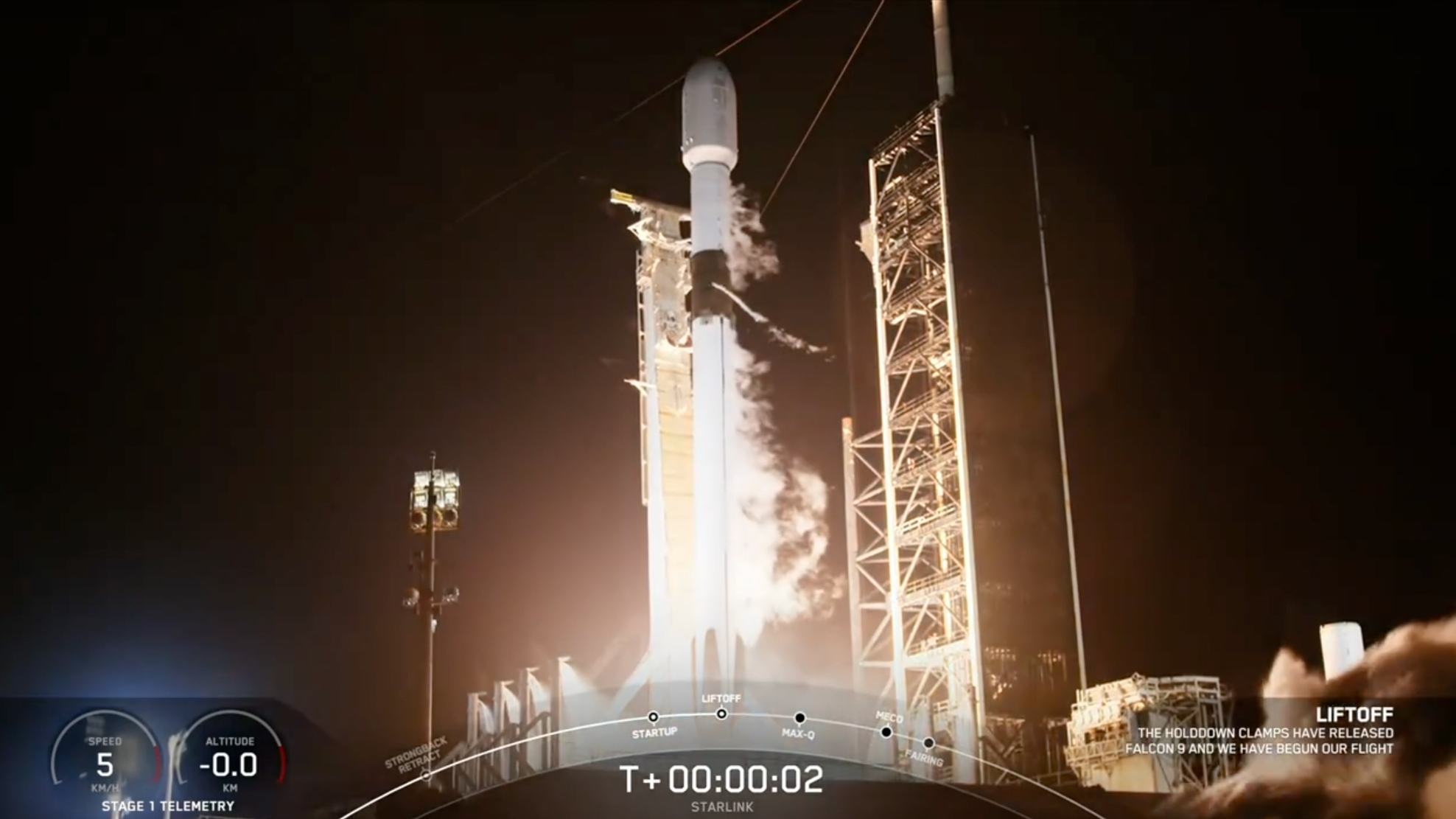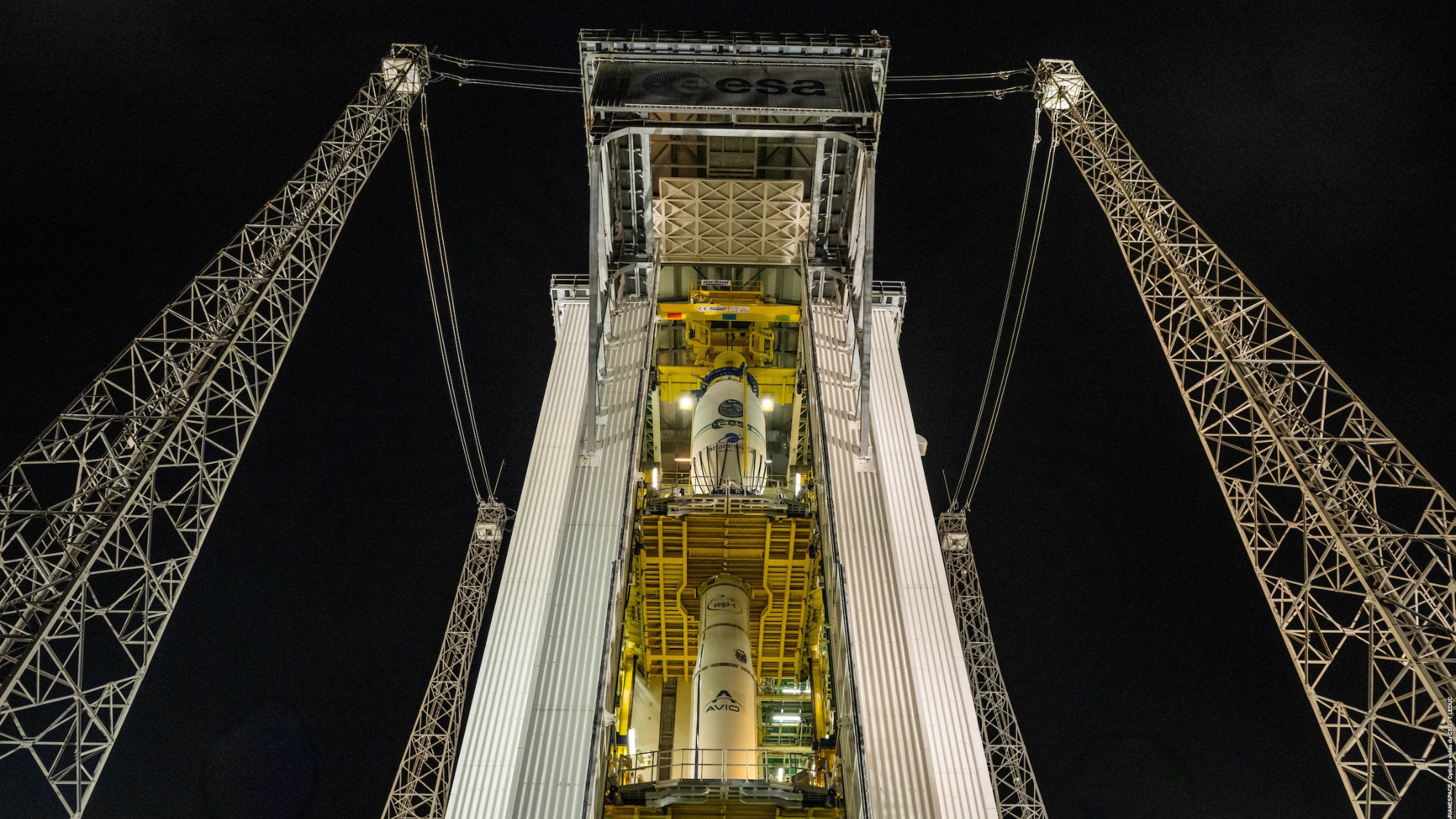Spacewalkers Add New Experiments to Space Station

Thisstory was updated at 2:46 a.m. EST.
Twoastronauts floated outside the International Space Station late Monday toinstall new experiments that will study the harsh orbital environment and help explainrecent glitches with Russian Soyuz spacecraft.
Clad inRussian-built spacesuits, stationcommander Michael Fincke of NASA and flight engineer Yury Lonchakov spentmore than five hours working outside the orbiting laboratory to attach the newscience equipment. The only hitch popped up late in the spacewalk, when aproblematic data relay for a joint Russian-European experiment thwartedrepeated attempts to install it.
?Okay,going out into space again,? said Fincke, who made his fifth career spacewalkin the excursion. ?Excellent! It?s good to be here again.?
Lonchakov,a cosmonaut with Russia?s Federal Space Agency, led the five-hour, 38-minutespacewalk with Fincke while their NASA crewmate Sandra Magnus monitored theirprogress from inside the space station. The spacewalk began at 7:51 p.m. EST(0051 Dec. 23 GMT), about 40 minutes late, due to a pressure valve glitch.
Thespacewalkers swiftly accomplished their primary task to install a so-calledLangmuir probe near their airlock hatch of the space station?s Russian-builtPirs docking compartment. The tool is designed to measure the surrounding plasma and electromagneticenvironment.
Data fromthe probe is expected to help Russian engineers pin down the cause of explosivebolt malfunctions that sent two of the last three Soyuz spacecraft thatferried station astronauts back to Earth to suffer module separation glitchesduring their descents. The malfunctions, in October2007 and April 2008, forced the Soyuz vehicles into off-target landings andsubjected their crews to higher gravitational stresses than nominal landings.
Get the Space.com Newsletter
Breaking space news, the latest updates on rocket launches, skywatching events and more!
Russianengineers believe that electrical arcs or other electromagnetic interferencenear the space station?s Soyuz docking ports may have prompted the explosivebolt failures. A suspect bolt was removed from the last Soyuz to land prior toits Oct. 24 descent this year and it touched down on target as planned.
But Russianengineers hope the new plasma probe outside the station will yield moreinsights.
?It?sdefinitely a step in that process,? said Kirk Shireman, NASA?s deputy spacestation program manager. ?There?s still a ways to go in the overallunderstanding and confirmation of the root cause that we have on the Soyuz.?
In additionto attaching the plasma probe, Lonchakov and Fincke retrieved a Russianexperiment canister of biological samples from the space station?s hull. Theyalso installed a Russian plasma physics experiment called Impuls to theexterior of the station?sZvezda service module, at times working uncomfortably closed to a solararray, which they asked flight controllers to move to give them more room.
?I?m veryclose to the solar array,? Fincke said. ?It?s very important that nothing bebroken here.?
But it wasa second experiment, dubbed EXPOSE-R, which refused to activate properly afterthe spacewalkers installed it near Impuls. A joint project between the Europeanand Russian space agencies, the experiment is designed to understand howorganic materials are affected when exposed directly to space.
Despite repeatedefforts to activate it, flight controllers at Russia?s Mission Control nearMoscow were unable to receive any telemetry from the device via a data relayconnector. Flight controllers eventually ordered Fincke and Lonchakov to removethe experiment and return it back inside the International Space Station.
?We had toremove the entire EXPOSE-R because of one connector,? said a disappointedLonchakov. ?Yes, that?s a shame.?
Mondaynight?s spacewalk marked the 19th excursion outside the space station this yearand the 119th dedicated to construction and maintenance of the orbitinglaboratory since its first element launched in 1998. Fincke ended his fifthspacewalk with 21 hours and 23 minutes of spacewalking time. Lonchakov,meanwhile, ended with five hours and 38 minutes in his spacewalking debut.
?Yury, wasit beautiful?? Magnus asked after the spacewalk.
?Yes it wasbeautiful, although we really had no time to look around,? Lonchakov replied.
- Video - Dangerous Spacewalk: Handling Explosives
- Images - Endeavour's STS-126 Night Launch
- NASA's Most Memorable Missions
Join our Space Forums to keep talking space on the latest missions, night sky and more! And if you have a news tip, correction or comment, let us know at: community@space.com.

Tariq is the Editor-in-Chief of Space.com and joined the team in 2001, first as an intern and staff writer, and later as an editor. He covers human spaceflight, exploration and space science, as well as skywatching and entertainment. He became Space.com's Managing Editor in 2009 and Editor-in-Chief in 2019. Before joining Space.com, Tariq was a staff reporter for The Los Angeles Times covering education and city beats in La Habra, Fullerton and Huntington Beach. In October 2022, Tariq received the Harry Kolcum Award for excellence in space reporting from the National Space Club Florida Committee. He is also an Eagle Scout (yes, he has the Space Exploration merit badge) and went to Space Camp four times as a kid and a fifth time as an adult. He has journalism degrees from the University of Southern California and New York University. You can find Tariq at Space.com and as the co-host to the This Week In Space podcast with space historian Rod Pyle on the TWiT network. To see his latest project, you can follow Tariq on Twitter @tariqjmalik.









